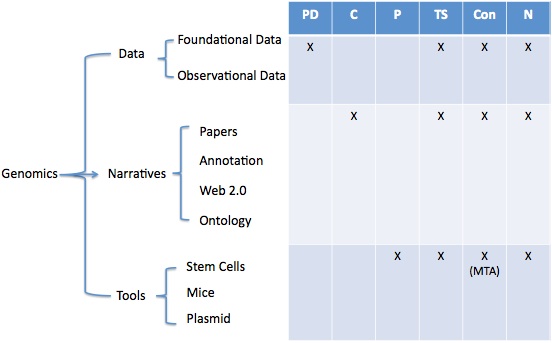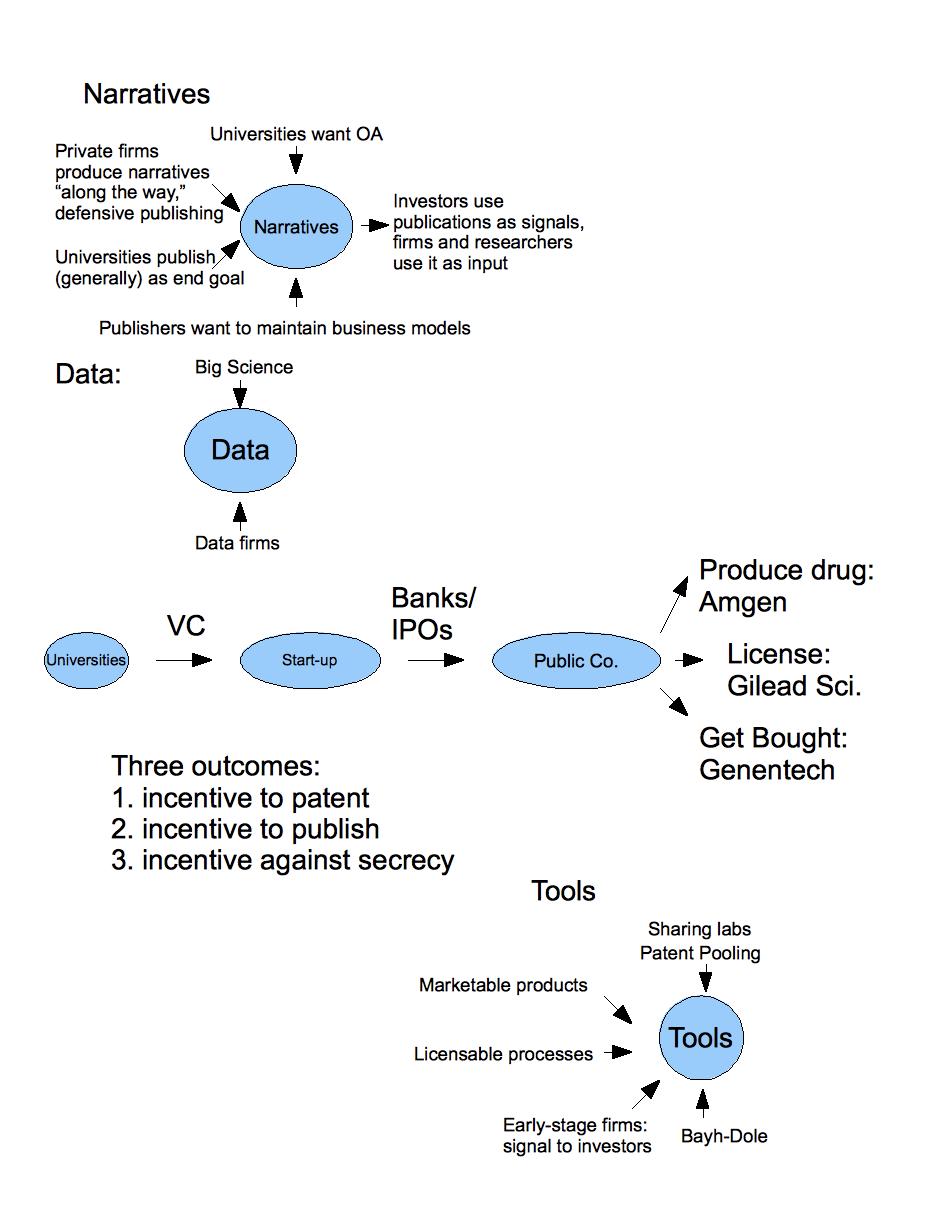Biotechnology - Genomic and Proteomics: Difference between revisions
| Line 54: | Line 54: | ||
The science of genomics is focused on the study of the genomes of organisms. The field includes intensive efforts to determine the entire DNA sequence of organisms and fine‐scale genetic mapping efforts to determine the activity and function of genes. Genomic scientists produce genetic, pathway, and functional information analysis about the genome in attempts to place the DNA code in context inside living beings, typically in order to improve human health or advance agricultural technology.<br> | The science of genomics is focused on the study of the genomes of organisms. The field includes intensive efforts to determine the entire DNA sequence of organisms and fine‐scale genetic mapping efforts to determine the activity and function of genes. Genomic scientists produce genetic, pathway, and functional information analysis about the genome in attempts to place the DNA code in context inside living beings, typically in order to improve human health or advance agricultural technology.<br> | ||
The first techniques that can be related to genomics were the development of sequencing, genome mapping, data storage, and bioinformatics analyses in the 1970‐1980s. This period also marks the birth of the first biotechnology industries in the USA. Amgen and Genentech are the oldest examples still in the market and are models for other startups in terms of business models. The high uncertainty and asymmetry of information characteristic of the biotechnology industry transformed the field, from a commercial perspective into an archipelago of high‐specialized islands of knowledge. Collaborations inside the industry have since that time been characterized by the “big deal” involving a complex transfer of IP, future royalties, data, investment, and employee sharing. Such collaborations are rarely open to outside parties and are themselves asymmetrical in their treatment of property. | The first techniques that can be related to genomics were the development of sequencing, genome mapping, data storage, and bioinformatics analyses in the 1970‐1980s. This period also marks the birth of the first biotechnology industries in the USA. Amgen and Genentech are the oldest examples still in the market and are models for other startups in terms of business models. The high uncertainty and asymmetry of information characteristic of the biotechnology industry transformed the field, from a commercial perspective into an archipelago of high‐specialized islands of knowledge. Collaborations inside the industry have since that time been characterized by the “big deal” involving a complex transfer of IP, future royalties, data, investment, and employee sharing. Such collaborations are rarely open to outside parties and are themselves asymmetrical in their treatment of property. | ||
[[Image: | [[Image:GenomicsIP.jpg]] | ||
===Deprioritized Market Segments=== | ===Deprioritized Market Segments=== | ||
Revision as of 02:45, 20 April 2010
Field definition
Basic Definition
Simply defined, biotechnology is any technology that relies on living organisms or biological systems. By this definition, human beings have been using biotechnology for thousands of years to produce food products, textiles and other necessary items. Several familiar items -- including yeast-rising bread, yogurt, cheese, wine, beer and vinegar -- are all produced with the help of cultured microorganisms.
In recent years, however, the term "biotechnology" has come to mean the use of genetic engineering and its associated techniques. This more common definition is found in a variety of applications, from medicine to agriculture.
Human genomics is of critical importance to health and welfare, used by firms as the foundation for innovation in many applications, from enviromental and medical to industrial and agriculture products.
The US biotechnology industry includes about 1,000 companies, with combined annual revenue close to $50 billion. Large companies include Amgen, Monsanto, Genentech, and Biogen. The biotechnology and the pharmaceutical industries overlap considerably, since many drugs are now developed using biotechnology. The industry consists of a few very large companies and many very small ones, and is fragmented by type of product. Most companies have annual sales under $50 million.
Industry overview here: Biotechnology Industry Organization
Key Industry Statistics
Key Industry Figures 2008
- Industry Revenue: 85,695.4$Mil
- Revenue Growth: 12.9%
- Industry Gross Product: 58,539.2 $Mil
- Number of Establishments: 6,815 Units
- Number of Enterprises: 6,480 Units
- Employment: 341,000 Units
- Exports: 7,251$Mil
- Imports: 2,954.7$Mil
- Total Wages: *20,630.9$Mil
Source: Ibis World
Focus Market Segments
Genomics is the study of the genomes of organisms. The field includes intensive efforts to determine the entire DNA sequence of organisms and fine-scale genetic mapping efforts. The field also includes studies of intragenomic phenomena and other interactions between loci and alleles within the genome and the techniques of sequencing, genome mapping, data storage, and bioinformatic analyses. The wide range of genomics outputs means that the entire range of intellectual property rights come into play at some point in the cycle. Roughly speaking we can divide the knowledge products into narratives, data, and inventions, and use these as a tool to divide up the field for our case study.
From initial R&D to the moment when a target product is developed for licensing to Pharmaceutical or Agricultural companies, we will study the following:
- Data production: Genomic or proteomic sequences
- Narrative production: Journals focused on biotechnology and related disciplines; publications of data; descriptions of tools or patents, or commentaries on them
- Tool production: processes for producing data or physical products
Genomics
The science of genomics is focused on the study of the genomes of organisms. The field includes intensive efforts to determine the entire DNA sequence of organisms and fine‐scale genetic mapping efforts to determine the activity and function of genes. Genomic scientists produce genetic, pathway, and functional information analysis about the genome in attempts to place the DNA code in context inside living beings, typically in order to improve human health or advance agricultural technology.
The first techniques that can be related to genomics were the development of sequencing, genome mapping, data storage, and bioinformatics analyses in the 1970‐1980s. This period also marks the birth of the first biotechnology industries in the USA. Amgen and Genentech are the oldest examples still in the market and are models for other startups in terms of business models. The high uncertainty and asymmetry of information characteristic of the biotechnology industry transformed the field, from a commercial perspective into an archipelago of high‐specialized islands of knowledge. Collaborations inside the industry have since that time been characterized by the “big deal” involving a complex transfer of IP, future royalties, data, investment, and employee sharing. Such collaborations are rarely open to outside parties and are themselves asymmetrical in their treatment of property.

Deprioritized Market Segments
Tools such as software for biotechnology (bio-informatics) and other biological tools not genetically modified.
Excluded From Field Definition
We will not study data, process, or tool production once a target product is licensed to pharmaceutical or agricultural products
Study of the field
Analysis of the field with basis on Field Research Methodology
- Overview of Economics of Intellectual Property in BGP
- Give an overall picture of the BGP field
- Outputs and Products of the field: data, narratives and tools produced by the BGP field
- Legal tools available for and in use by the actors of BGP field: IP in BGP
- competitive advantages in BGP
- IP Profile of Biggest for-profit companies in BGP
- IP Profile of non-profit companies in BGP
- IP Profile of Universities working in BGP
- IP Profile of Associations in BGP
- Commons based cases in BGP
- Peer-Production Business models in BGP
- Open Business models in BGP
Special Cases in BGP
Under this section we will explore possible special case studies that will be later trasformed in papers under BGP Field Intellectual Property Profile.
